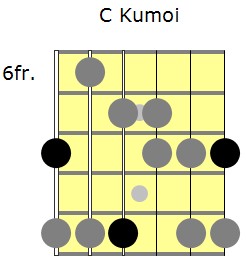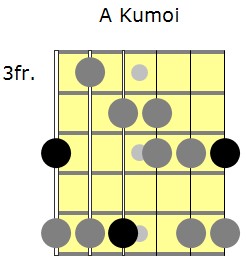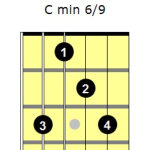Introduction
Do Your Guitar Solos all Sound the Same?
Are You Looking for a “New” Sound for Your Solos?
If so, you are in luck. In this 3-part lead guitar tutorial series, we will take a look at a fun pentatonic scale that will add some spice to your guitar solos.
Most guitarists have heard of the major and minor pentatonic scales. In fact, many guitar players use the major and minor pentatonic scales for just about everything.
The Problem with Major and Minor Pentatonic Scales
Now don’t get me wrong, there is nothing inherently wrong with the major and minor pentatonic scales. There are some very cool and unique uses for them.
But the problem for most beginner and intermediate players, is their overuse. More often than not, when a new student comes to me for help with guitar soloing, the main reason they hit a soloing plateau is their over reliance on the major and minor pentatonic scales.
There is a rich pentatonic world beyond the major and minor pentatonic scales. in fact, there are many different types of pentatonic scales that can give you some very cool sounds and add variety to your guitar solos.
Pentatonic = 5 Notes
A pentatonic scale is simply a scale that consists of five different notes.
In most forms of popular music, the most common pentatonic scale types are the major and minor pentatonic scales. But, as I just mentioned, there are many other types of pentatonic scales you can choose from.
The Kumoi Scale
The Kumoi scale is one of the many other pentatonic scales that can be used to add some great new sounds to your guitar solos.
The Kumoi scale, which is also sometimes called the Hawaiian scale, consists of the following notes:
C-D-Eb-G-A
Here is one fingering for the scale:
This fingering is moveable, so you can play this scale fingering on any fret you want. The black notes are the root notes. The root notes indicate the letter-name of the scale.
So if you position the Kumoi scale fingering so the root notes are on C’s, you will have a C Kumoi Scale.
If you re-position the scale fingering so that the root notes are on A’s, you will have an A Kumoi Scale.
Practice the Kumoi scale fingering ascending and descending.
Also practice the scale fingering on different frets.
In part 2 of this series we will dig deeper into the Kumoi scale and how it can be used in guitar solos.
Recommended Resource
In this tutorial, we started to look at the Kumoi scale. For a more in depth look at guitar scales including the Kumoi scale, check out my complete guitar scale course:
 The World of Scales: A Compendium of Scales for the Modern Guitar Player.
The World of Scales: A Compendium of Scales for the Modern Guitar Player.










Pingback: Kumoi Scale – How to add a Fresh New Sound To Your Guitar Solos Part 2 | Guitar Accelerator Blog: Play Guitar - Over 100 Free Electric and Acoustic Guitar Lessons and Tutorials